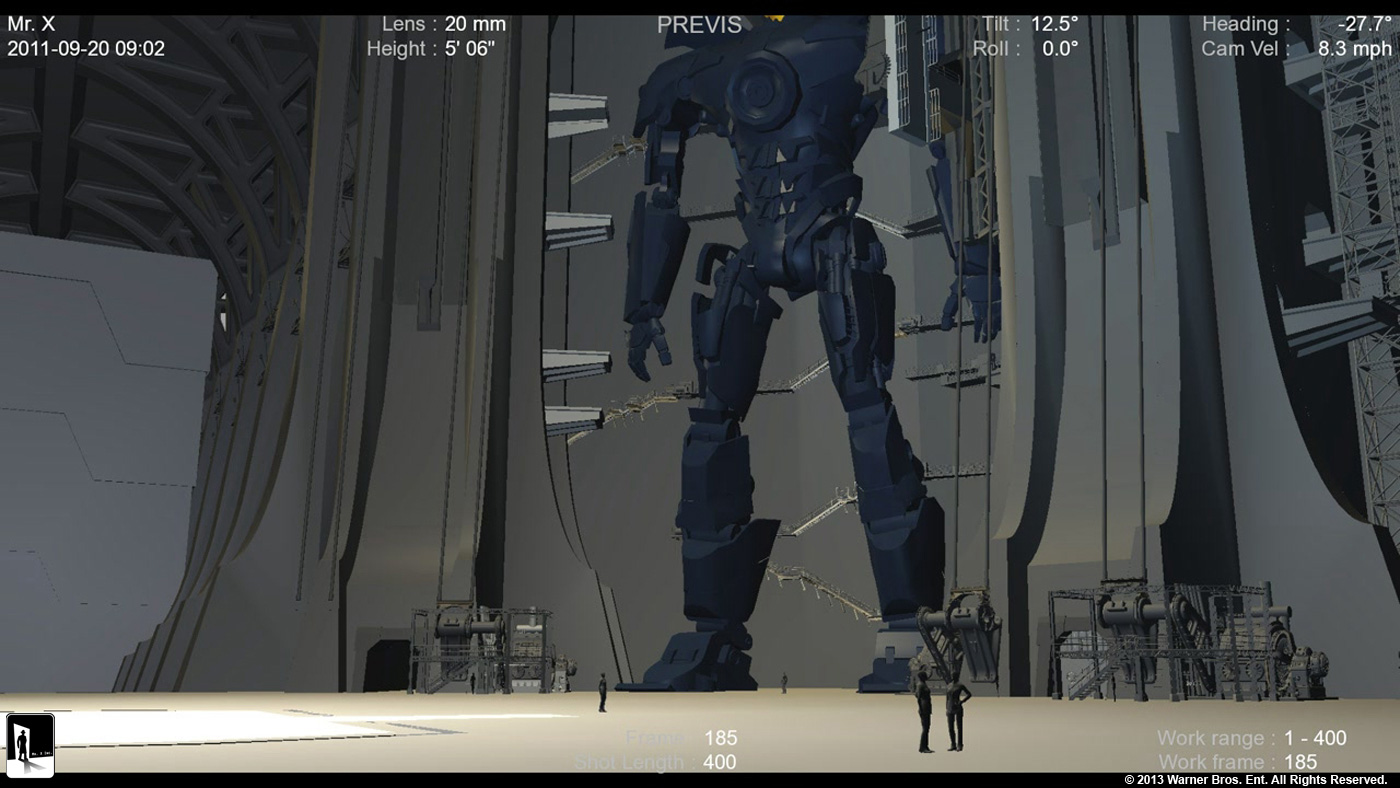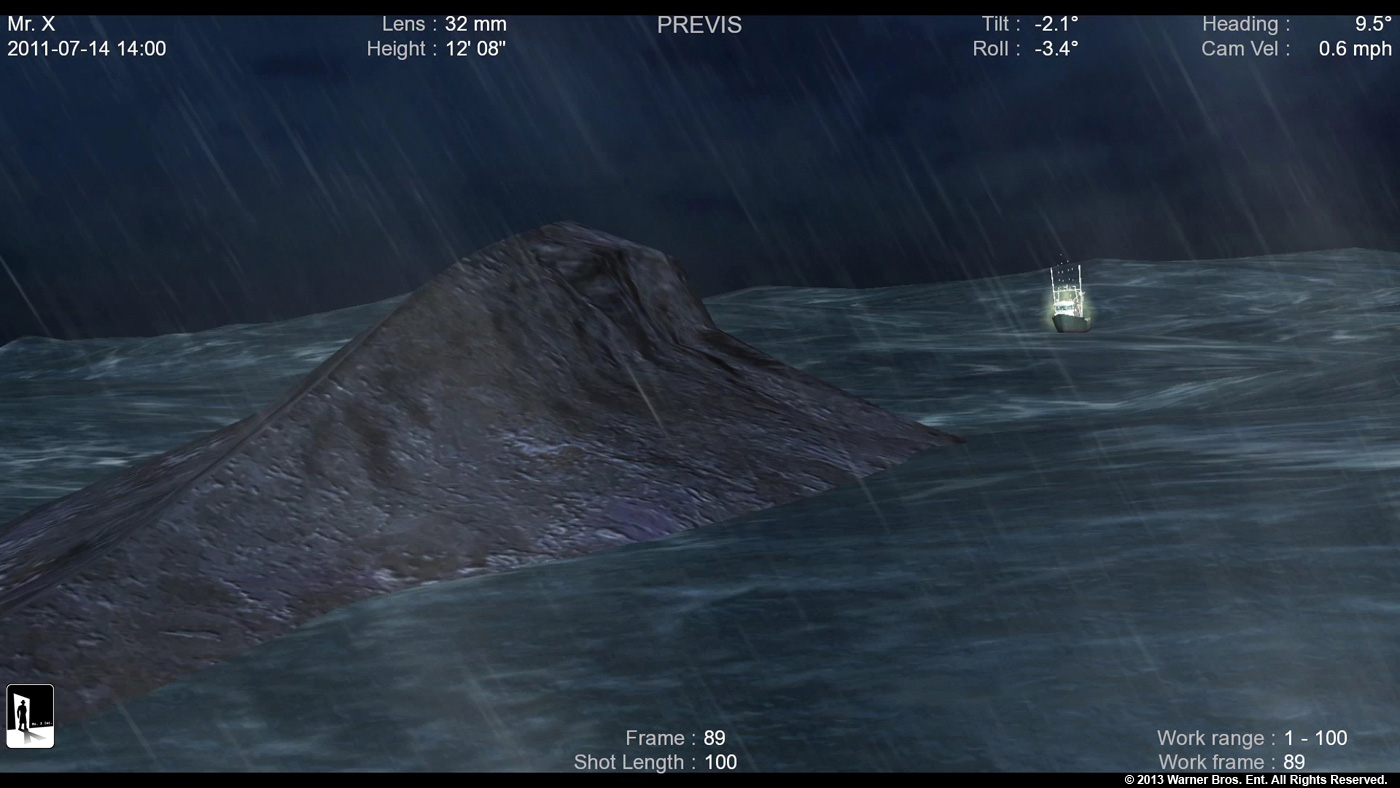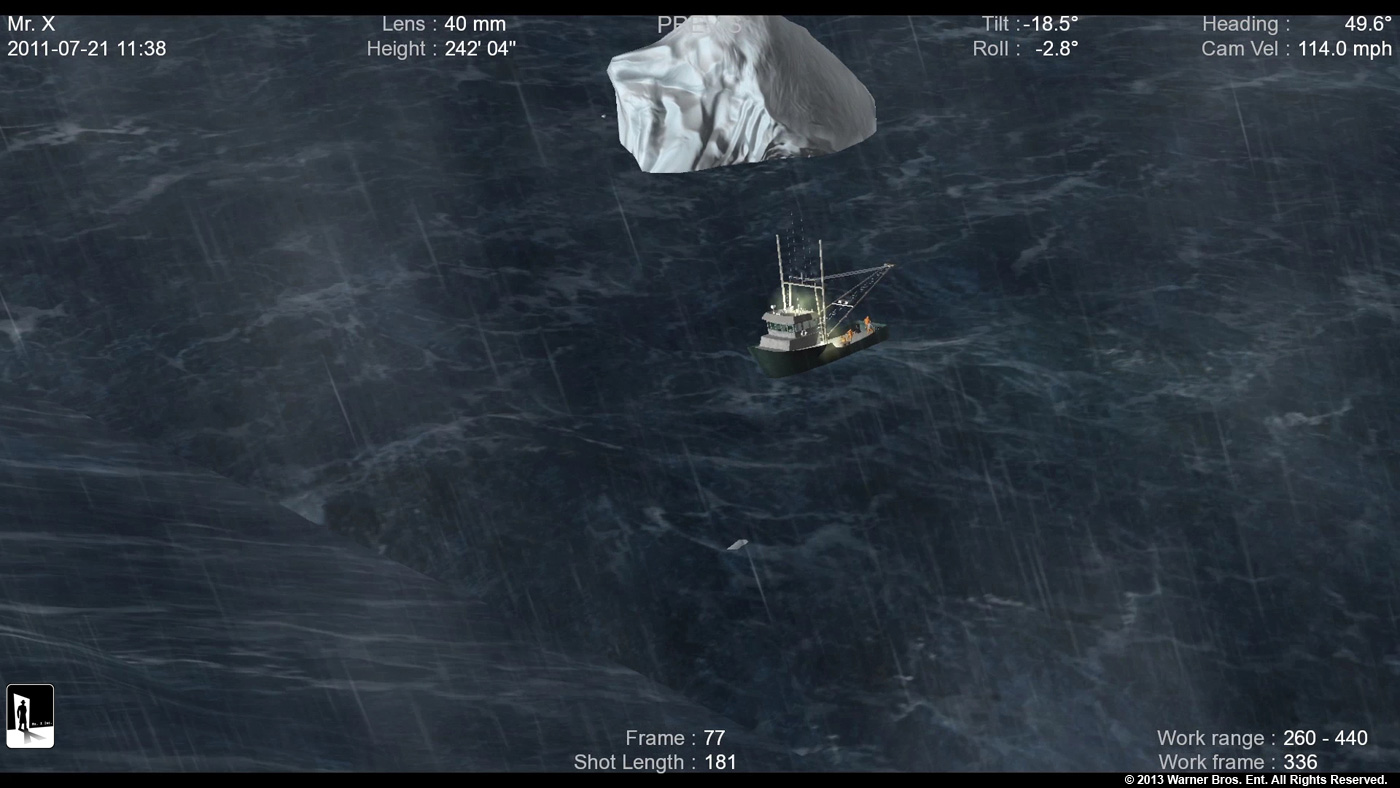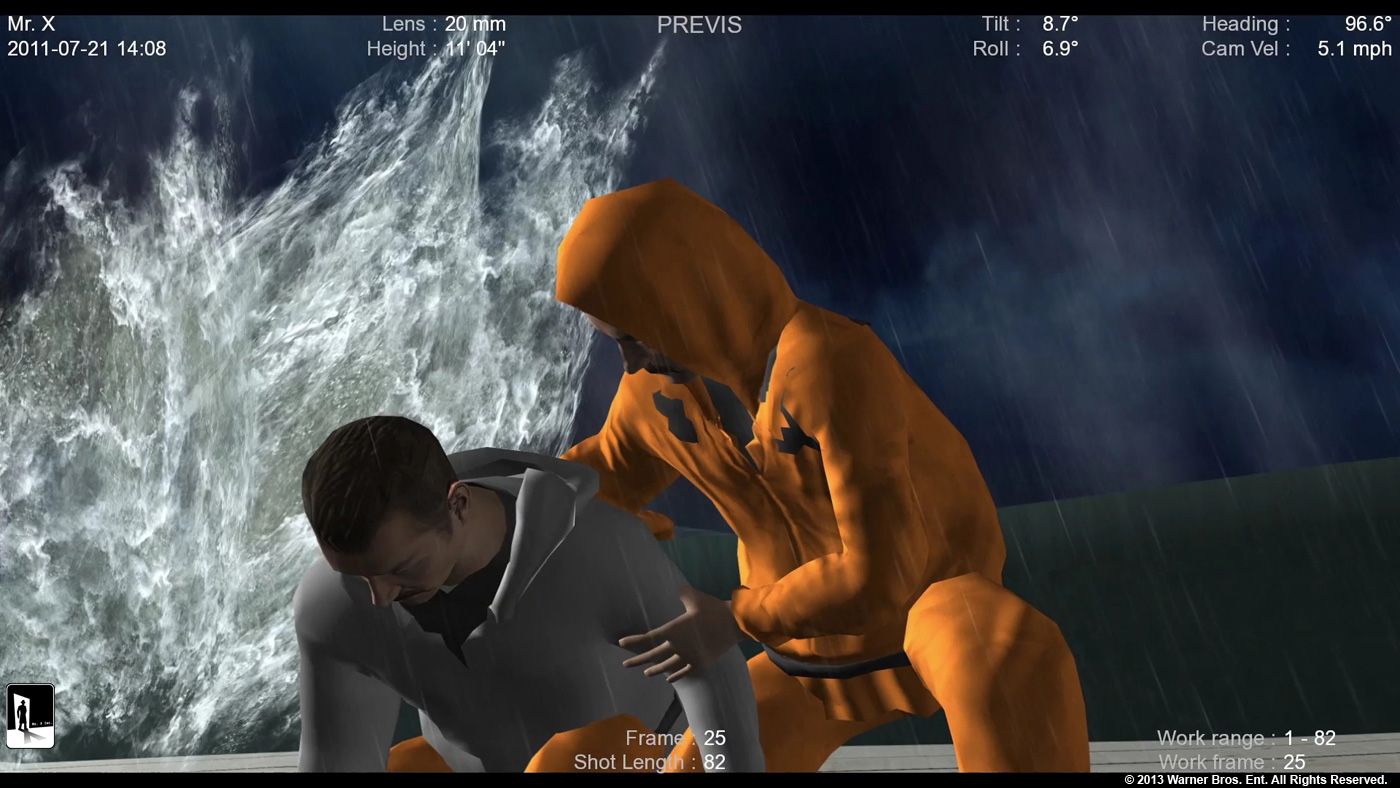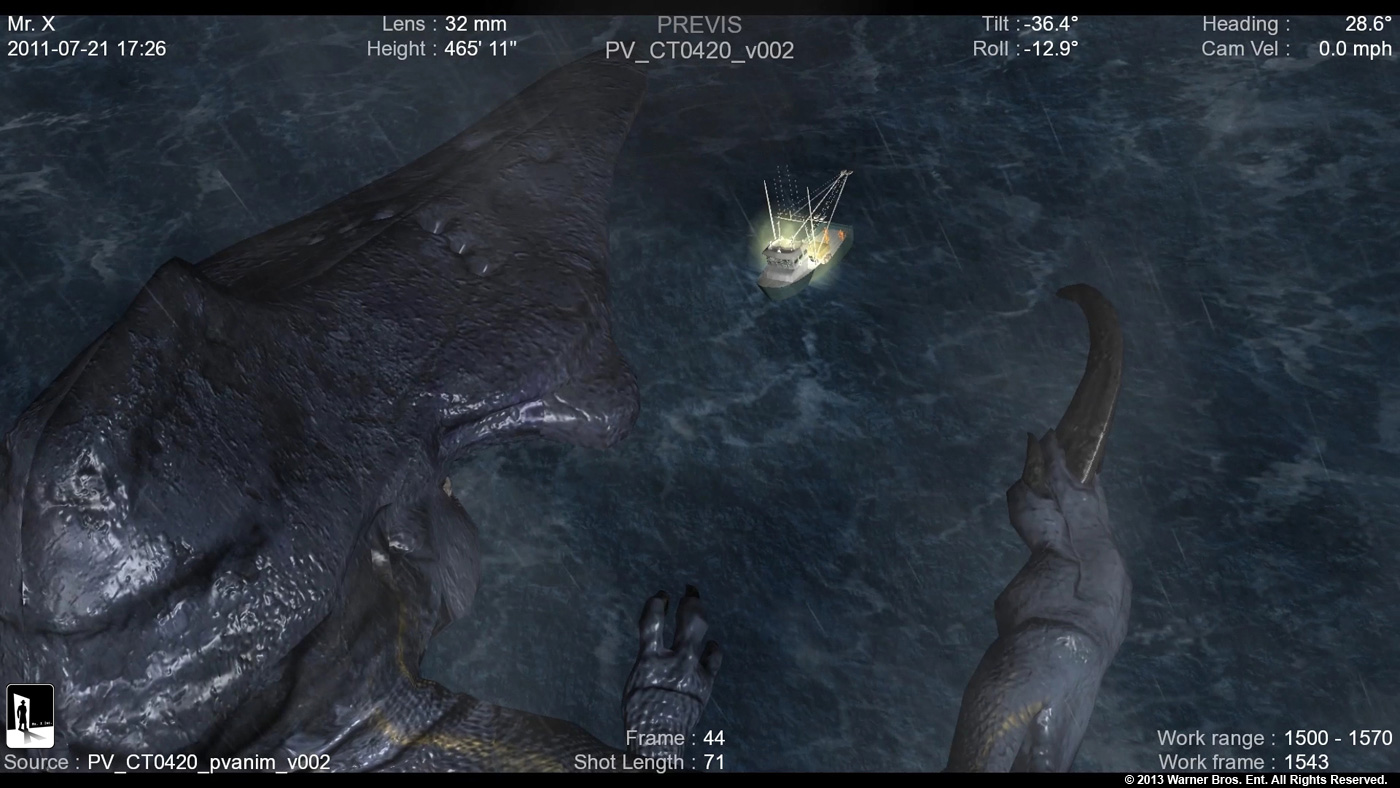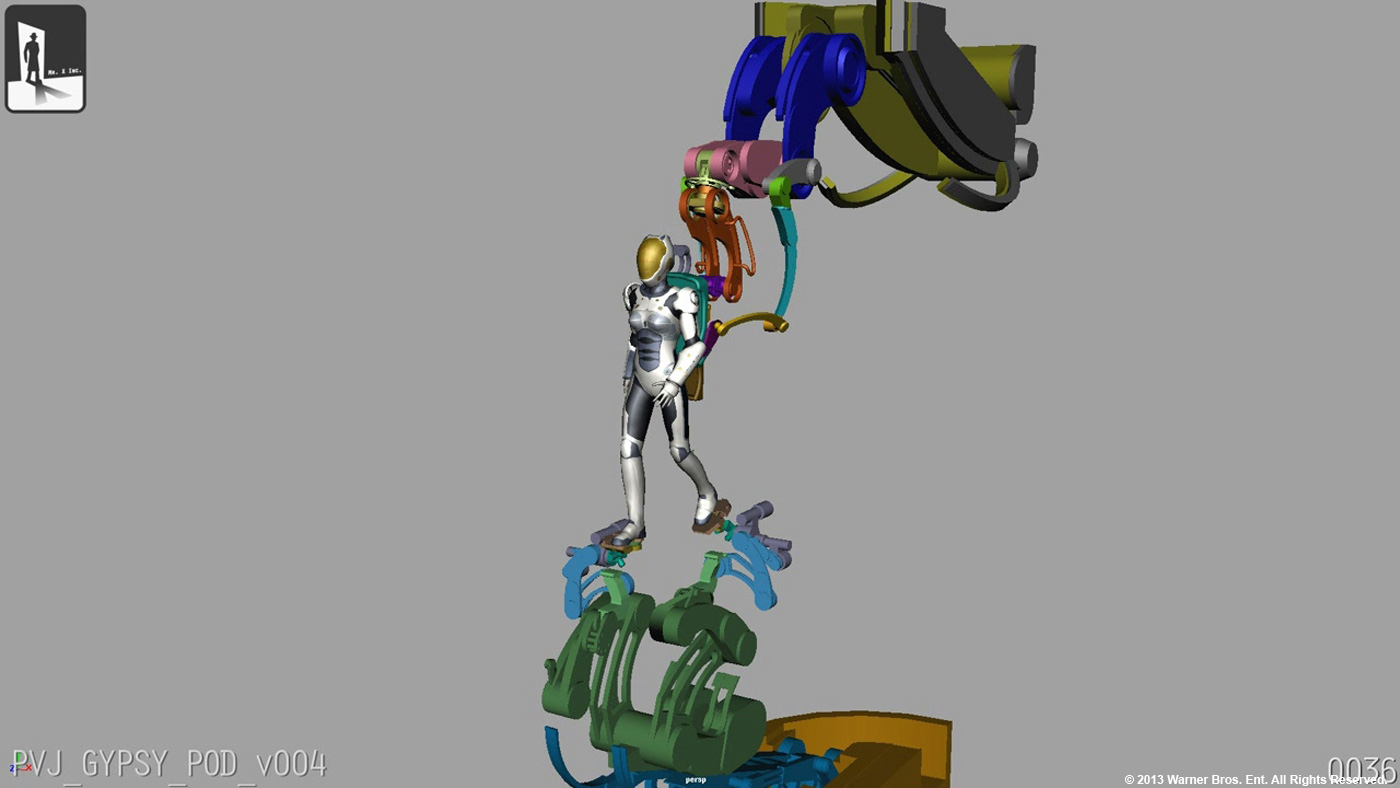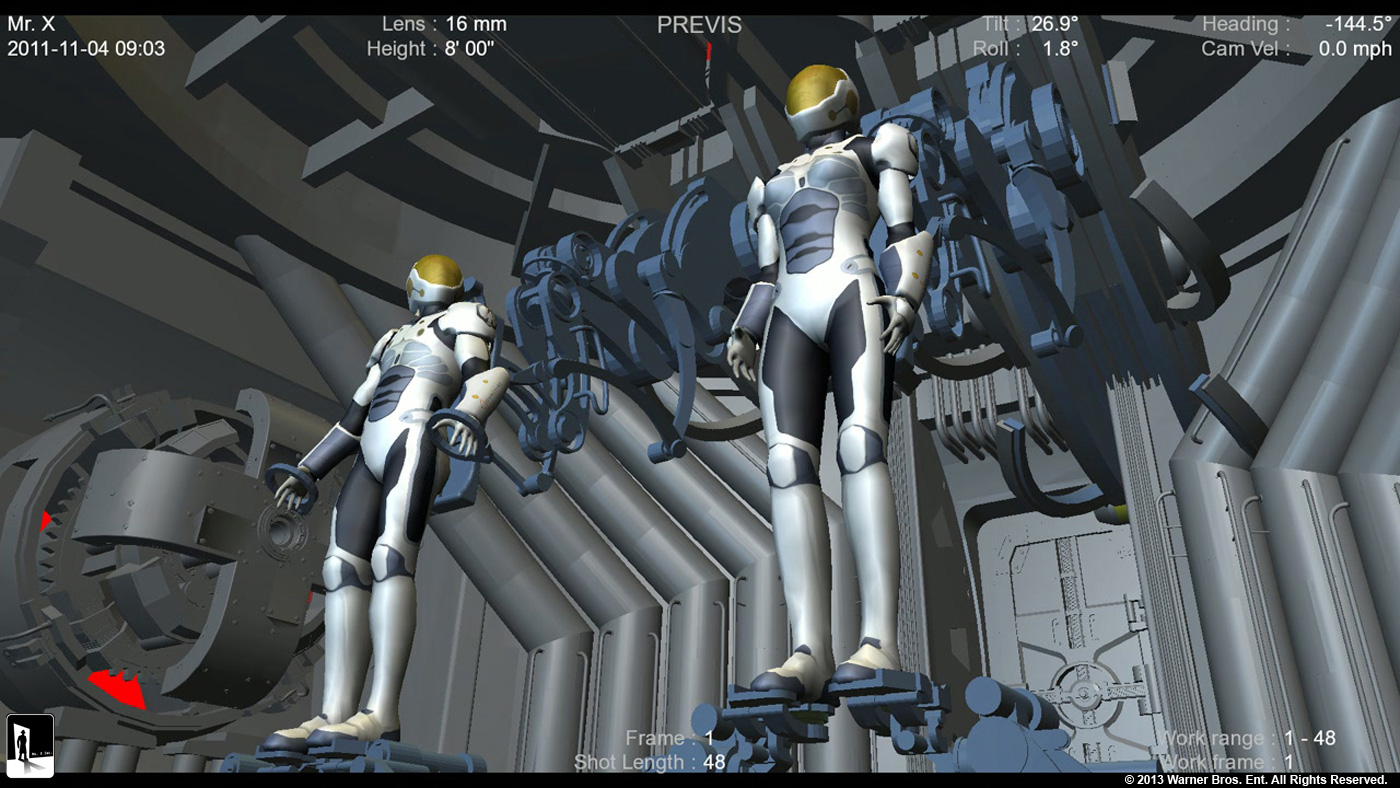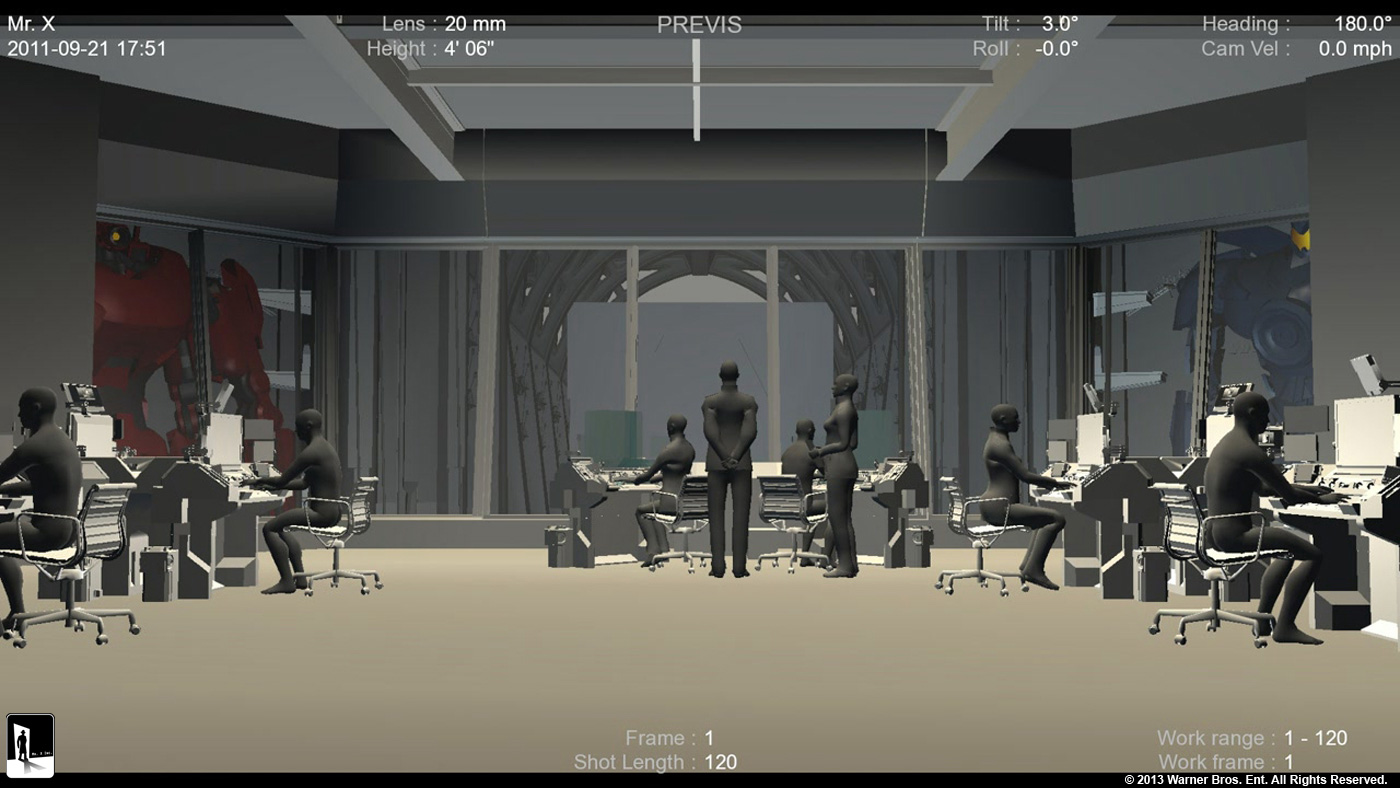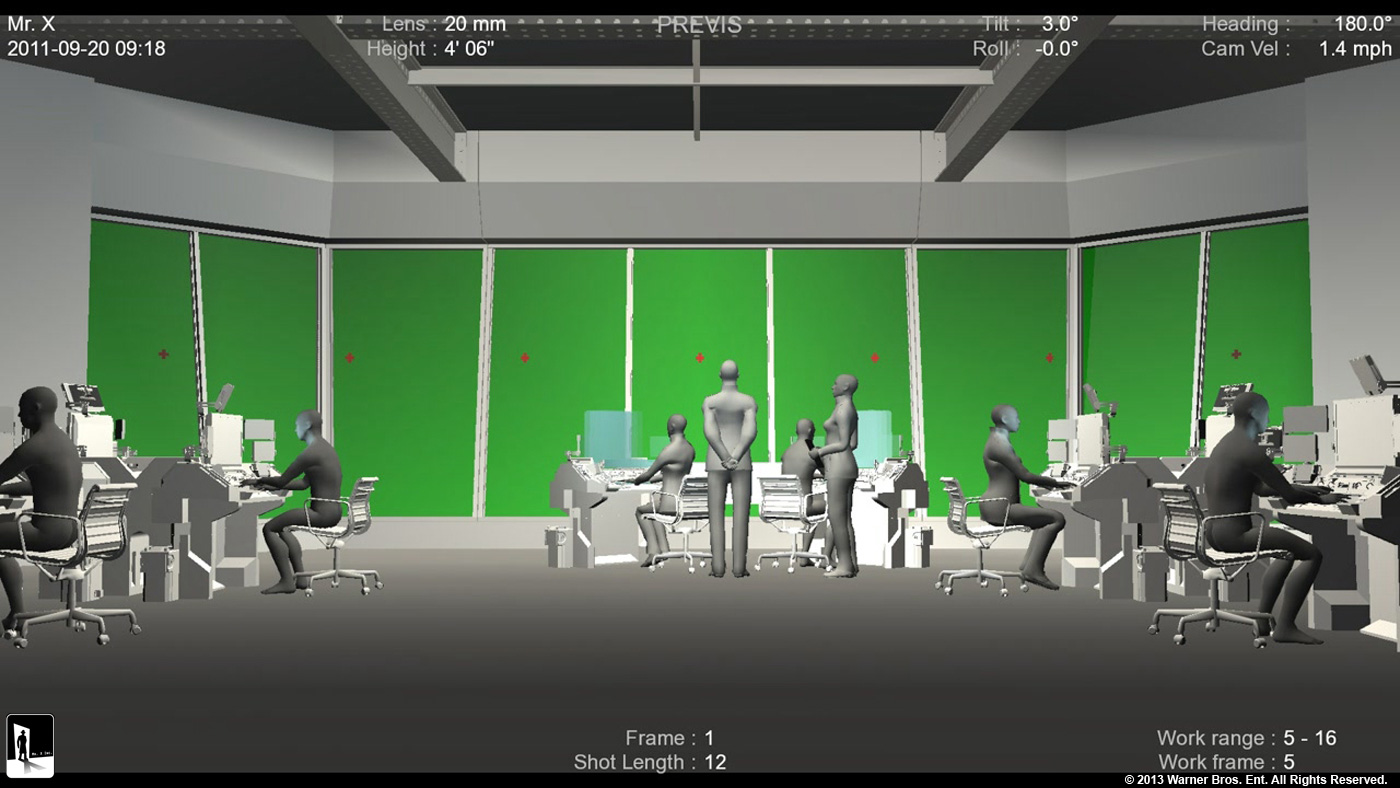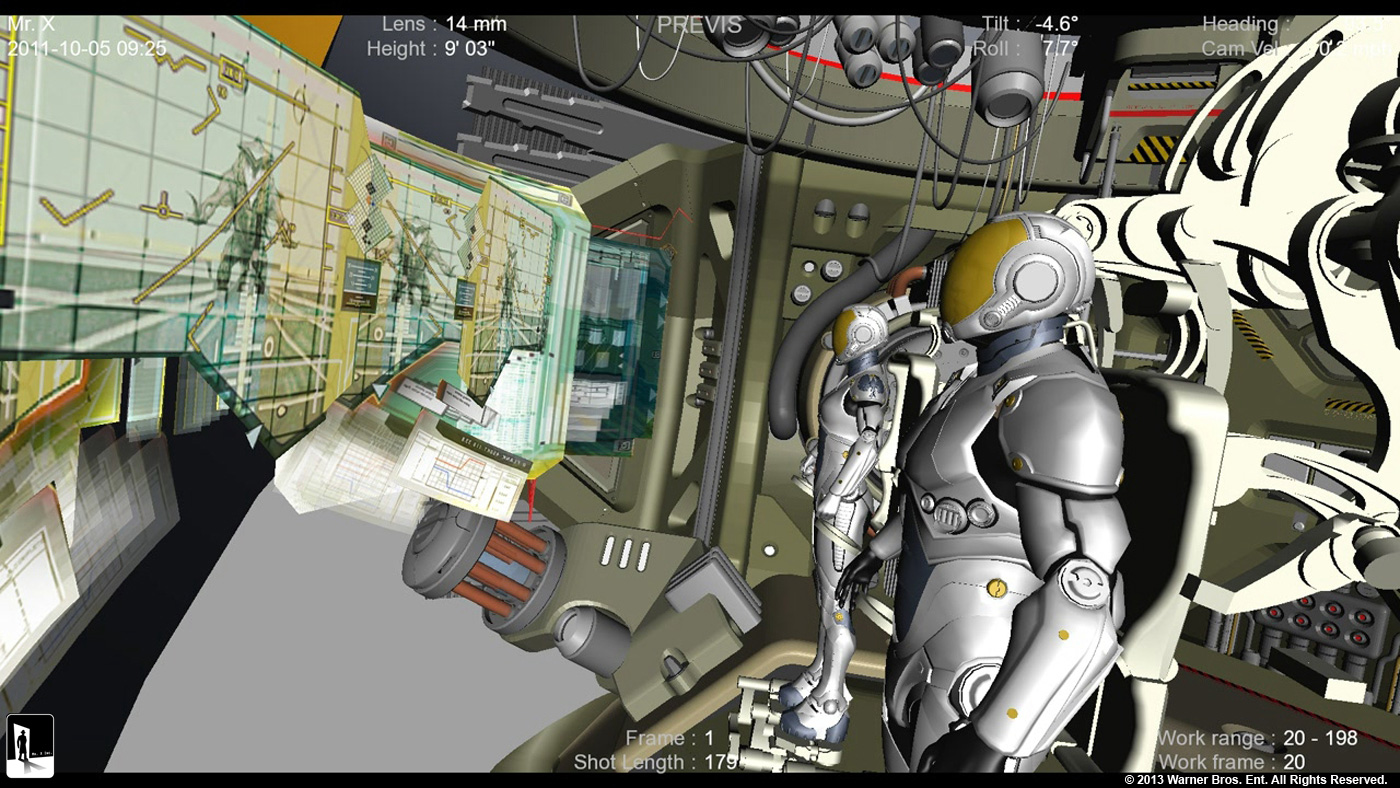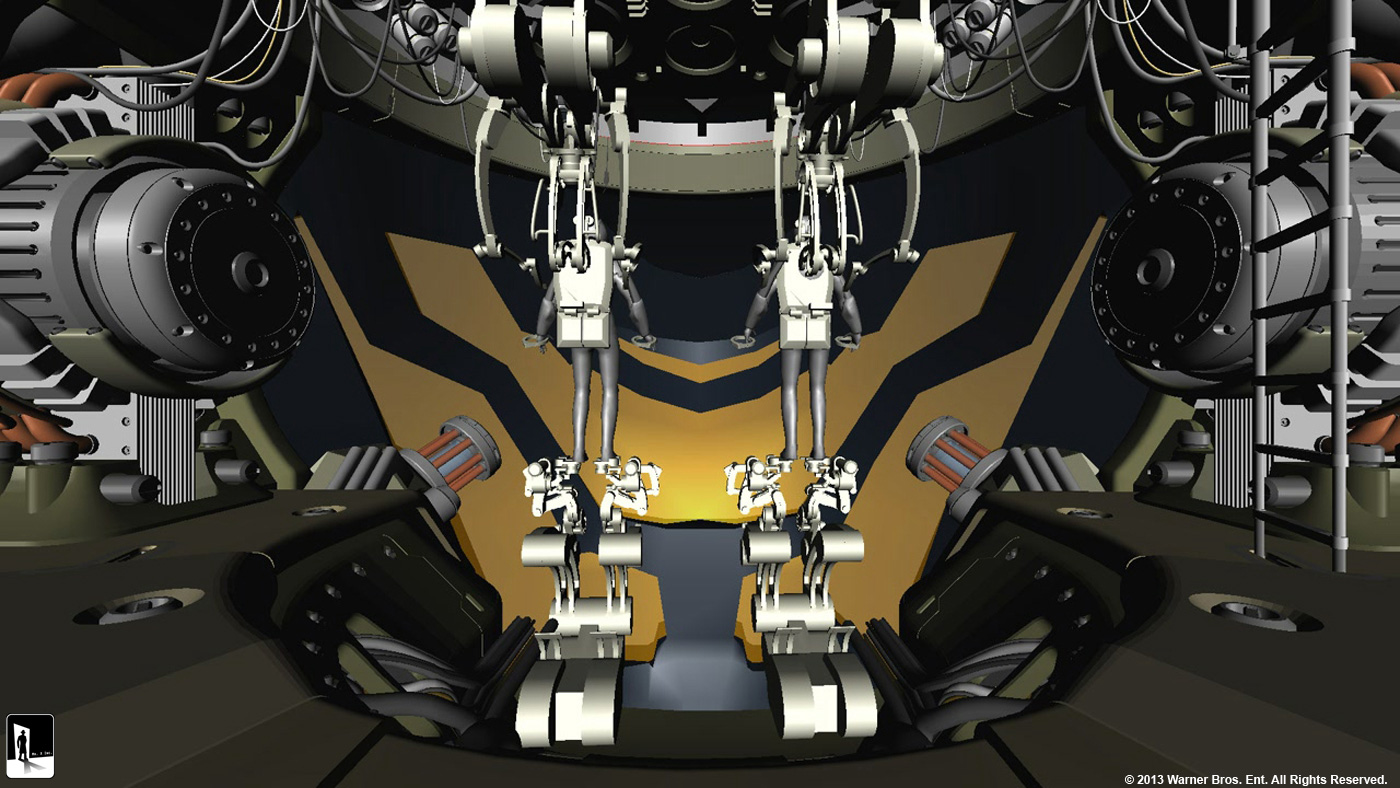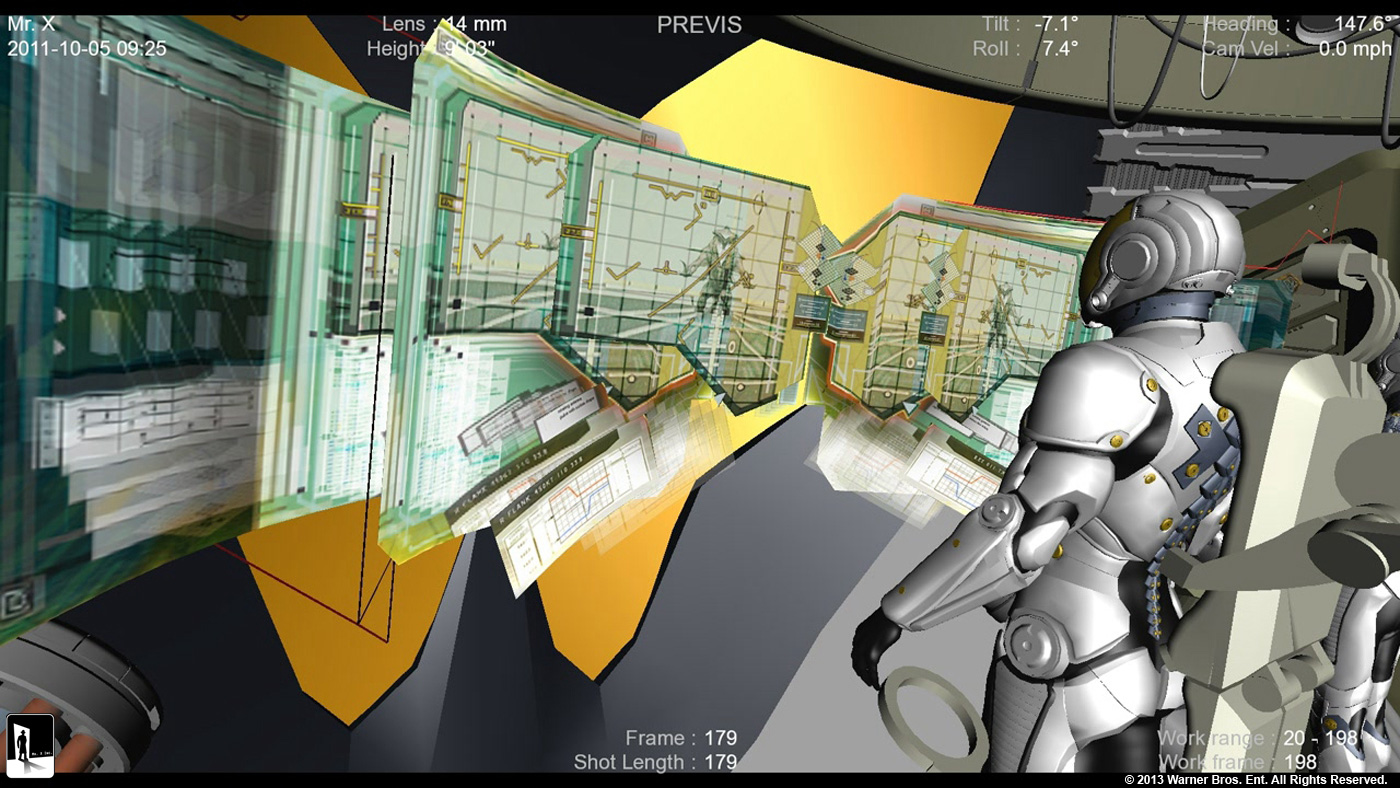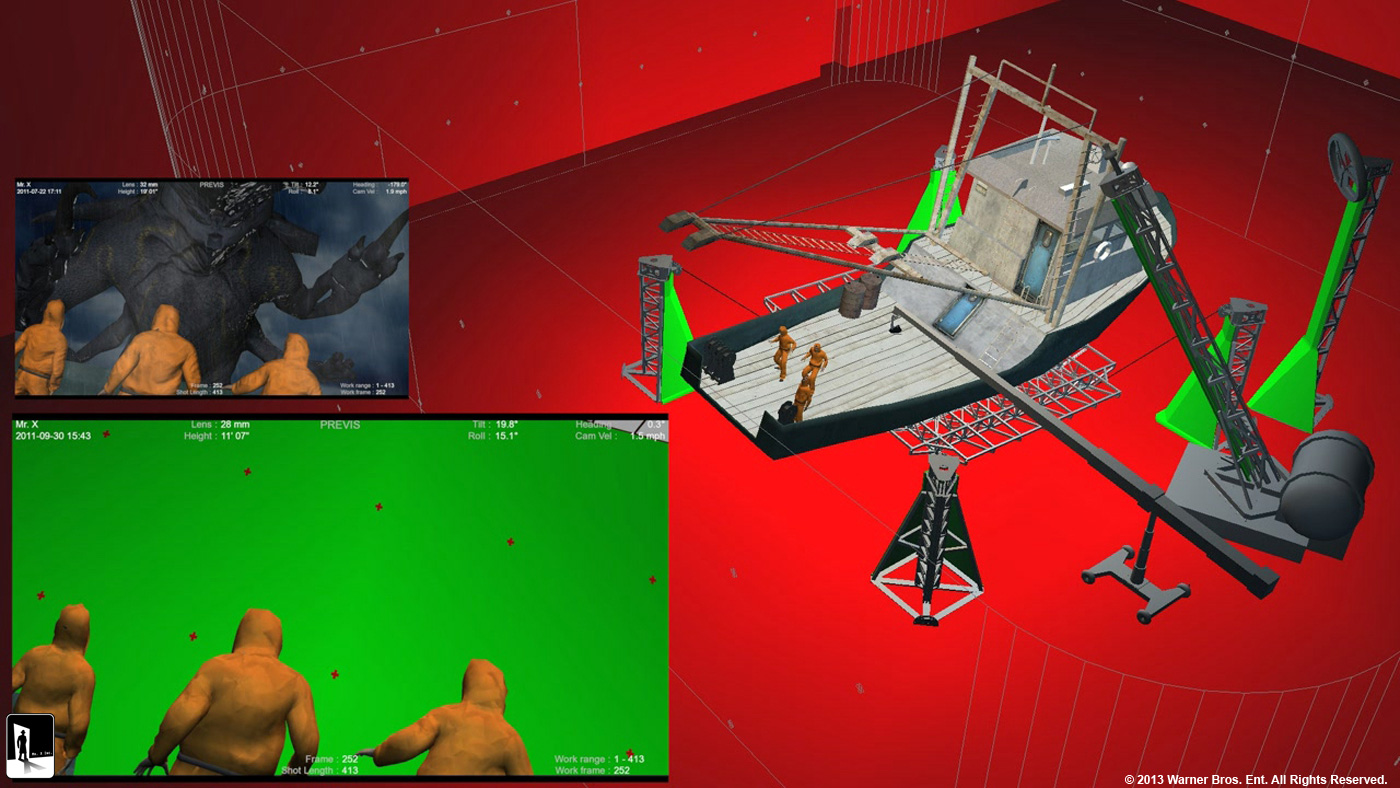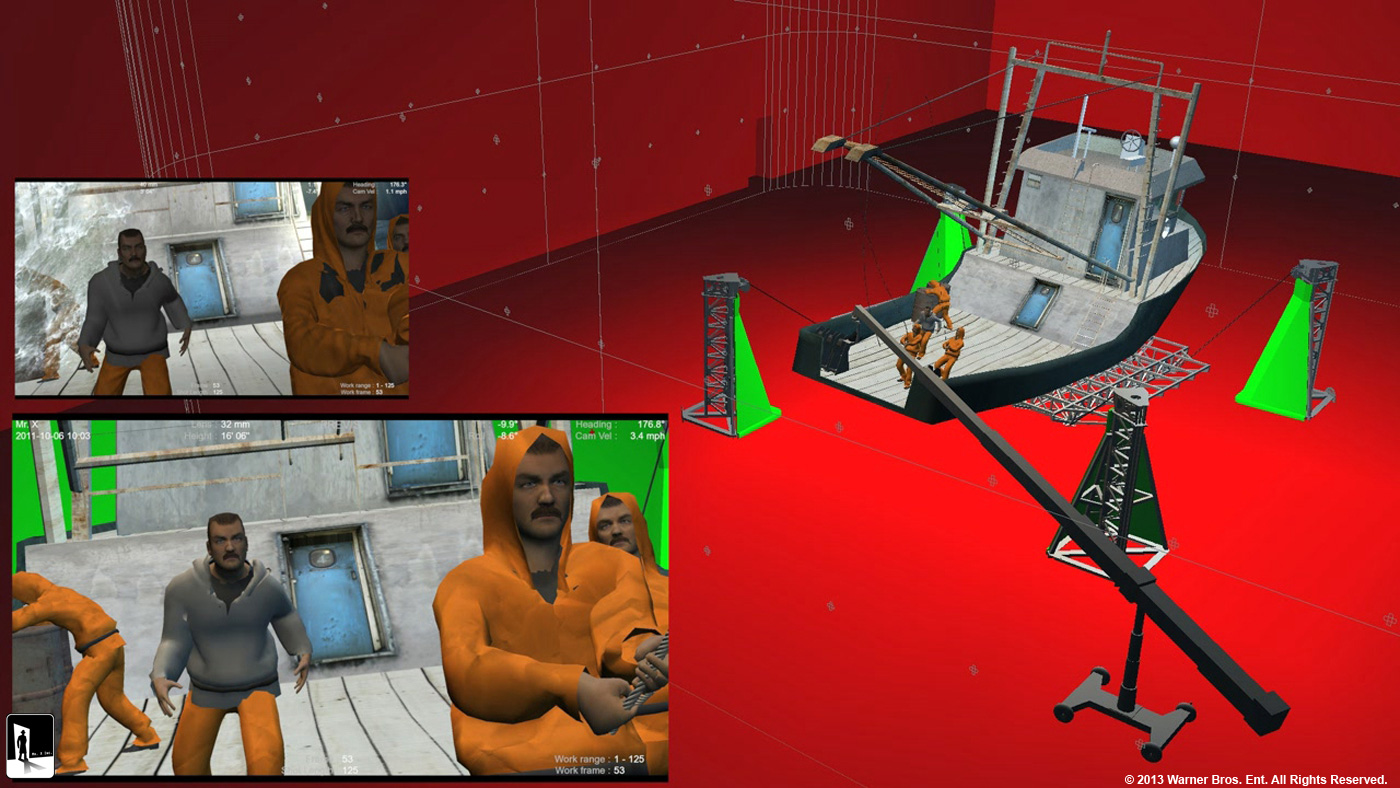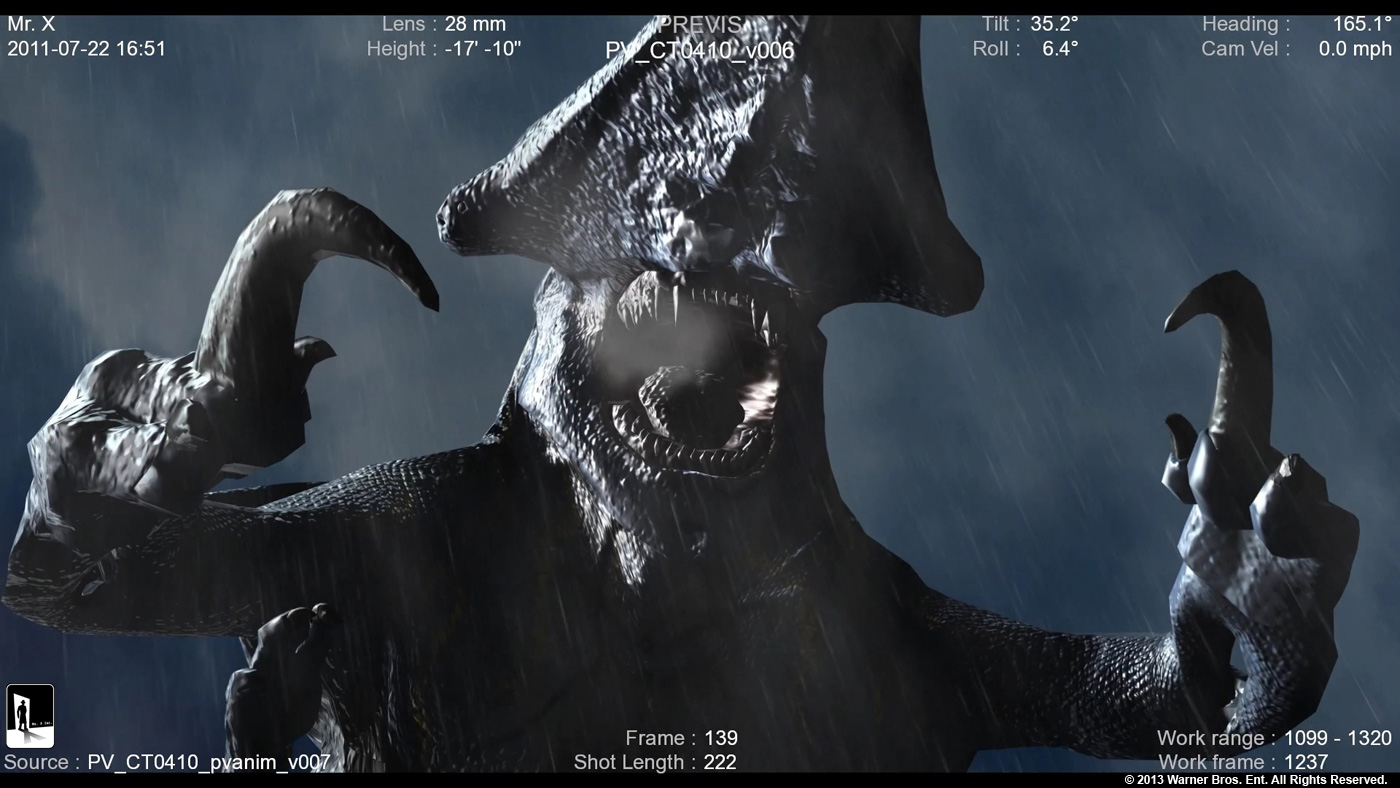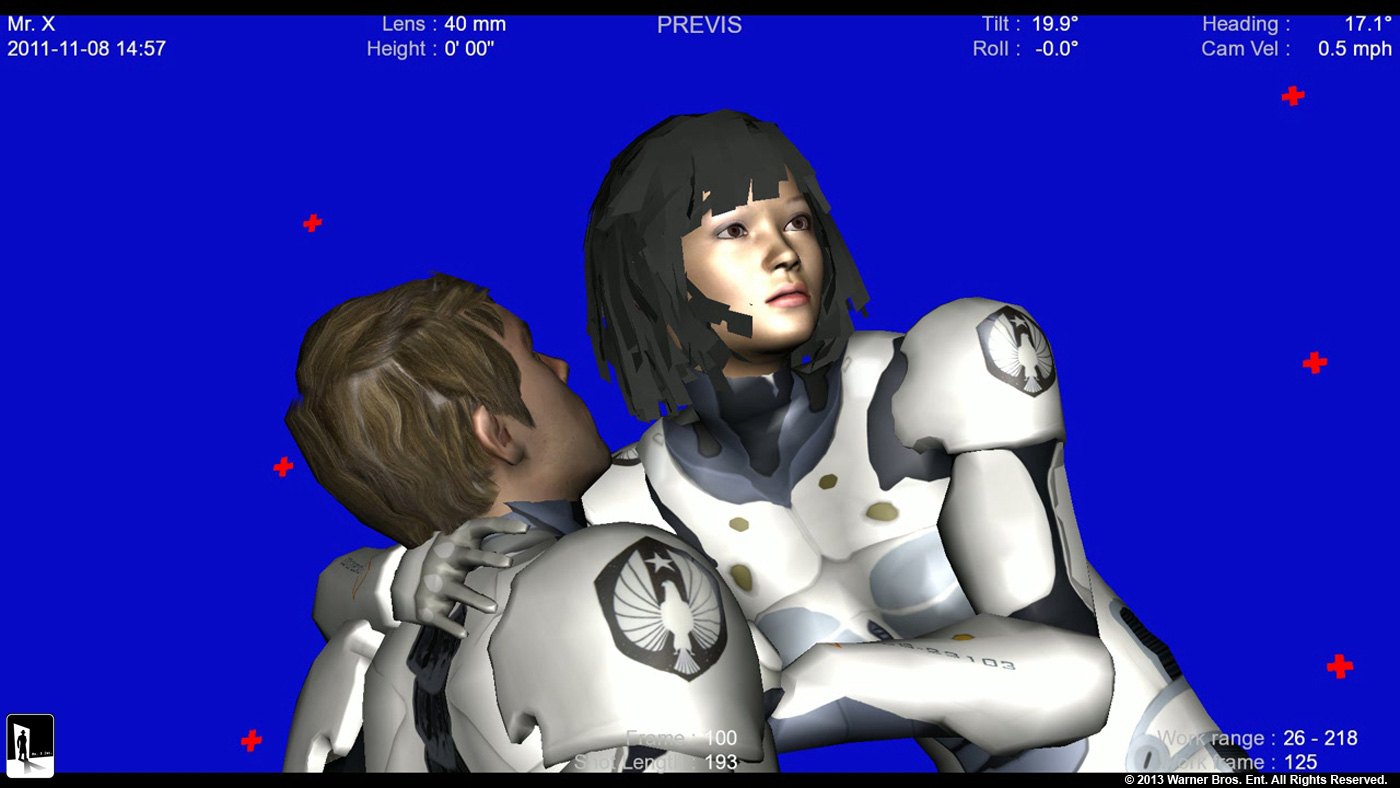During his last visit, Aaron Weintraub explained the work of Mr. X on TRON: LEGACY. He then worked on projects like THE THREE MUSKETEERS, TWILIGHT: BREAKING DAWN – PART 1, THE THING, RESIDENT EVIL: RETRIBUTION and MAMA .
Craig Calvert worked in the VFX for over 13 years. He has worked on projects such as I, ROBOT, TROPIC THUNDER or ANGELS & DEMONS. He then joined Mr. X in 2010 and participates in films like REPO MEN, TRON: LEGACY, THE VOW or RESIDENT EVIL: AFTERLIFE.
What is your background?
Aaron Weintraub – Previs Supervisor // After teaching myself about CG in my parents’ basement in the late 80’s and early 90’s, visual effects seemed like the ultimate place to combine my love of film and computer graphics. I earned a BFA in Film (splicing and taping 16mm film and sound mag) while also working primarily as a Flame/Inferno artist for commercials and music videos at Topix in Toronto and then abroad. In 2000, I co-founded Mr. X with Dennis Berardi to focus exclusively on VFX for feature films and other long-format projects.
Craig Calvert – Previs Lead // I am a CG supervisor with 14 years experience in film, television and videogame production. I began as a Mechanical Engineering student until the desire to build awesome images outweighed the desire to build structures, and I shifted my focus to Film School. I have contributed as an artist and supervisor to films such as I ROBOT, TROPIC THUNDER, ANGELS AND DEMONS, and TRON: LEGACY.
How did Mr X got involved on this show?
Aaron Weintraub – Previs Supervisor // We were preparing to start working on previs for another project that Guillermo del Toro was planning to shoot in Toronto, an adaptation of H.P. Lovecraft’s AT THE MOUNTAINS OF MADNESS. It was still very early on in the project when it was decided that PACIFIC RIM would be his next film instead, and the entire team just switched gears and transferred over. As well, at the same time that PACIFIC RIM was ramping up, we were also beginning pre-production on MAMA, which Guillermo was producing.
How was the collaboration with director Guillermo del Toro?
Craig Calvert – Previs Lead // Guillermo was truly a fun, engaging, and inspiring person to work with. He would meet with us regularly to give design notes on the 3D construction of his concepts, the staging of our test shots, and the pacing of action in animated sequences. He always had a clear vision of what he wanted, but allowed for us to inject ideas and opinions that solved problems in unique ways. On top of having great artistic sensibilities, he is completely hilarious. One of the funniest directors around, and a great person to work with.
What was his approach and expectations about the previsualization?
Aaron Weintraub – Previs Supervisor // On PACIFIC RIM, previs was used less as an exercise in finding and creating the actual shots that would be in the film (though there was certainly a fair bit of that) and more as an tool to force certain questions to be asked about production methodologies and stylistic choices. For example, when we started, nobody had any idea how large the Jaegers or the Kaiju were, and even though Guillermo had a detailed vision of the moments and shots he wanted, it wasn’t until we put a virtual camera into a virtual ocean that we could really begin to spec out exactly what the scale of these scenes was going to be.
How was your collaboration with VFX Supervisor John Knoll?
Craig Calvert – Previs Lead // Mr X had a limited interaction with ILM and John Knoll. When appropriate, we would package up our assets and animations to provide a clean handover. They took the ball from there.
What have you done on this show?
Craig Calvert – Previs Lead // Mr X was brought on board to help Guillermo and VFX Supervisor Jamie Price visualize the film, and answer practical production issues before filming took place. For our first test sequence, the main goal was to nail the feel of the film. Lens choices, composition, and shot pacing were priorities early on. We spent a lot of time working with the sense of scale so that these incredibly huge beings could move fast enough to be fierce, but slow enough to be believable. We were still at a stage where the actual size of the Jaegers/Kaijus was up for debate, and our tests helped inform those choices.
While we were shooting for a stylistic goal, we also piggybacked the technical setup for most of the practical onset elements. For example, the animation and camera work we designed for fishermen on the Saltchuck was later refined and used to inform the technical specs of the practical gimbal rig on set. Over time, a lot of our work would shift away from the ‘animation’ previs towards more ‘techvis’.
Aaron Weintraub – Previs Supervisor // We spent a lot of time figuring out how the Conn-pod rig that the pilots used to drive the Jaegers would work. From very early on, GDT insisted that this be a completely practical device that the actors were hooked up to, but designing a rig that wouldn’t rip their limbs off and was comfortable enough to spend 12 hours a day in was quite a task. The entire rig needed to essentially be a body-sized force-feedback game controller; As the pilots moved, the robot would move along with them, but as the robot was hit or moved by an external force, that force needed to be transferred back to the actors.
We built mockups of almost all of the physical sets, based on designs from the art department, which included the areas that would eventually be extended in CG. Framing up angles on these virtual sets helped plan exactly where to put the greenscreens and the camera cranes, and even helped design the physical portions of the sets themselves, as was the case when positioning the various beams and girders around the Alaska Wall environment. These set builds also let Guillermo visualize the eventual set extensions while working on the set, by using a GPS-enabled app to see, for example, the entire expanse of the Shatterdome as he moved the camera around and had the actors walk through the practical lower level with only a giant greenscreen behind them.
What kind of indications did you received from director Guillermo del Toro?
Craig Calvert – Previs Lead // Guillermo is an extremely well versed and affable director to work with, and was always open to outside input. During the initial creature sculpts, as we took the concept art and recreated it in 3D, he would sit with our team and give a steady stream of notes until the spirit of the drawing was captured in the virtual representation we were making. As the designs came together we would all take part in impromptu “schoolyard picks,” voting which Jaeger or Kaiju make the cut and go in the movie, and which should stay on the drawing board. Those types of interactive and involved discussions helped us to understand the scope and style of his vision, and inject our thoughts into the discussion.
Aaron Weintraub – Previs Supervisor // GDT is certainly not shy about offering his opinion. He’s lavish with his praise, but if he doesn’t like something you’re working on, he’ll let you know in as colourful language as possible.
How did you approach the previz creation?
Aaron Weintraub – Previs Supervisor // The previs was always used as an attempt to learn something about how to approach the practical shooting of the film. The previs and techvis became a tangible hub from which every other department could take something away to help them do their jobs better — Camera, grips, lighting, set design and construction, physical effects, stunts, even costumes. Everything came together in the previs and each department fed their ideas back into the fold for further iterations, until we had ultimately solved certain problems from everyone’s point of view.
What was your part of freedom to suggest ideas and camera movements?
Craig Calvert – Previs Lead // We were fortunate enough to receive a great deal of art and concept boards from the team to help us previs. Our aim, whenever possible, was to capture the spirit of those boards with lens choices and physical blocking. But sometimes a beautifully drawn storyboard is physically impossible or financially impractical to achieve, and that’s where we got to stretch ourselves to find unique ways of staging shots, and keep Guillermo’s vision intact.
How did you create the various characters, vehicles and environments?
Craig Calvert – Previs Lead // Mr X. modeled a great deal of assets for our previs work, using mainly Maya, ZBrush and Mudbox for geometry and normal map generation, and Mari for texturing. We fleshed out and helped iterate the designs of all of the Jaegers and Kaiju, starting from the fantastic art we were provided, and then regularly meeting with Guillermo and his team for design cycles. We also provided assets for numerous characters, locations, props and vehicles.
Can you describe one of your typical day on-set and then during the post?
Craig Calvert – Previs Lead // I don’t think there was such a thing as a typical day! Depending on the schedule our focus would shift, and allow us to touch on various aspects of the film. We would regularly meet with the Art Department and absorb set diagrams and construction plans, working to stage sequences in the computer. As camera choices and physical limitations were explored, we would review with Guillermo and the various leads, address notes they had, pop down to the practical set construction to confirm measurements, and iterate until we had a consensus on how a particular shot would be achieved.
Often our animators would be furiously working away on their previs sequence (mostly the battle between KnifeHead and Gipsy Danger) while the model team refined details of the Jaeger and Kaiju designs. At the same time, someone else could be testing a virtual physical simulation of what a 250ft tall robot falling over would actually look like.
Occasionally we would have outside participants, such as representatives from toy manufacturers, appear to sit with us and review the models, giving their own notes to address practical concerns for replicating the evolving designs.
Can you tell us more about the on-set tech viz work?
Craig Calvert – Previs Lead // Working from the art department plans, we would often create an accurate model of an unbuilt set, virtually block in all the shots described in the storyboards, and then work through any unforeseen problems. There we had a lot of freedom to explore lenses and the compositions described in the boards, and sort out issues like a desired shot needing to be far higher than the stage could allow. Laying out the optimal amount and placement of greenscreens, without affecting anything artistically, was a common problem for us to help solve. Testing all of this in the computer ahead of time allowed us to feed back into the art department and suggest layout changes, or if no physical solution was present, show the storyboard team the constraints they were working with. It was very much a nonlinear process, with all of the departments shuttling updated information to and through us, and back out again. In the end, testing the cameras, planning cranes, and exploring the set layout digitally saved a ton of time and uncertainty from the shoot.
Alongside the physical set layout tests, we worked to simulate some of the mechanical rigs used. The Jaeger heads were all mounted on a gimbal platform and the actors inside were shaken and tilted like crazy in accordance with what was happening for the shot. We built detailed rigs to simulate that gimbal platform, and the same used for the Saltchuck, to prove the range of motion and control would give Guillermo the shots he was looking for. It also tied into the set layout, as we could help show safety distances required for the gimbal, and provide options for equipment placement.
Surprisingly ‘simple’ sequences sometimes required a huge amount of iterations and multi-departmental meetings to get right. The construction crew featured welding on the Wall included a sequence of shots where the characters had to walk across and slide down sets of the girders they were repairing. We spent a large amount of time blocking in the animation and finding the exact dimensions of everything required so that the set piece could allow for all the shots Guillermo wanted, could fit within the stage we had for it, and allow all of the harnesses and rigging to function correctly. Each time we demonstrated a new layout, increasing levels of questions and issues would come to light, and we would work to solve them.
Once the previs is approved, how did you work with the VFX teams?
Craig Calvert – Previs Lead // We worked with ILM to hand-off all of our developed assets, including the previs-level meshes of the Jaegers and the ZBrush sculpts of the Kaiju. All animation files, rendered clips, models and textures were bundled up and passed along so they could move forwards from where we left off.
What is your best moment on this show?
Craig Calvert – Previs Lead // The initial combat sequence between Gipsy Danger and Knifehead, with some rather terrified fishermen caught in the middle during a raging storm at sea, was a great sequence to work on. Our previs was all animated in Maya 2013, using Viewport 2.0 to playblast renders. The environment we constructed allowed for us to playblast all elements of our ocean sequence in a single take, with only a small amount of secondary glow added in Nuke afterwards. We designed a dynamic ocean terrain that was flexible enough to be edited by the artist to affect wave height etc, and included special one-off waves for particular beats we needed to hit. It included rain effects, multiple layers of transparent splash and glow cards to add a sense of atmospherics, and an in-camera fog tool.
We leveraged every trick in the book to add apparent detail without slowing the animators down or forcing us into costly rendering cycles. Viewport 2.0’s support for environment reflection, normal maps, and screen space ambient occlusion were all used to great effect. However, the Maya 2013 Viewport 2.0 still had some limitations that we were forced to work around (like motion blur artifacts visible through alpha’d geometry). Overall it was a really useful tool to output some rather involved previs without needing to ‘render’ any elements.
Aaron Weintraub – Previs Supervisor // Agreed… this sequence was probably the highlight of the previs, especially rewarding since almost all of the shots were faithfully translated into the final film exactly as planned.
How long have you worked on this film?
Aaron Weintraub – Previs Supervisor // We began work in May of 2011 working out of the production office, continuing until the shoot began in November, then continued to provide support from the Mr. X office until the end of principal photography in the spring of 2012.
How many shots have you done?
Craig Calvert – Previs Lead // Mr X was involved in the previs for virtually every physical effect in the film. From testing Conn-Pod hydraulic gimbals to optimizing greenscreen layouts, our previs team informed the shoot process from start to finish.
What is your next project?
Aaron Weintraub – Previs Supervisor // Mr. X has just completed work on THE MORTAL INSTRUMENTS: CITY OF BONES, in theatres in August. We are currently working on CARRIE and ROBOCOP for MGM, and POMPEII for our long-time collaborator Paul W. S. Anderson.
We’re also rolling into production on the next season of History Channel’s Emmy-nominated series VIKINGS and last but not least, we’re continuing our relationship with Guillermo and gearing up to shoot his new series THE STRAIN based on his novels of the same name.
What are the four movies that gave you the passion for cinema?
Craig Calvert – Previs Lead // My four passion-inspiring movies would have to be RAIDERS OF THE LOST ARK, ALIENS, PREDATOR, and ROBOCOP. I grew up watching these films until the VHS tapes would wear out, obsessing over the creatures, fx, and spectacle of it all. Stan Winston and James Cameron were utter heroes to me.
Aaron Weintraub – Previs Supervisor // My four have got to be 2001: A SPACE ODYSSEY (“how did they do that?”), A CLOCKWORK ORANGE (“why does my stomach hurt watching this”), THE GODFATHER (“this is SO EPIC”), and TRON (“I could get paid to do this???”). I feel bad leaving out countless others like E.T., JURASSIC PARK, TERMINATOR 2, and PEE-WEE’S BIG ADVENTURE, etc. There are just so many.
A big thanks for your time.
Thanks very much for the opportunity to be featured on your website. We are fans as well.
// WANT TO KNOW MORE?
– Mr. X: Official website of Mr.X.
© Vincent Frei – The Art of VFX – 2013


